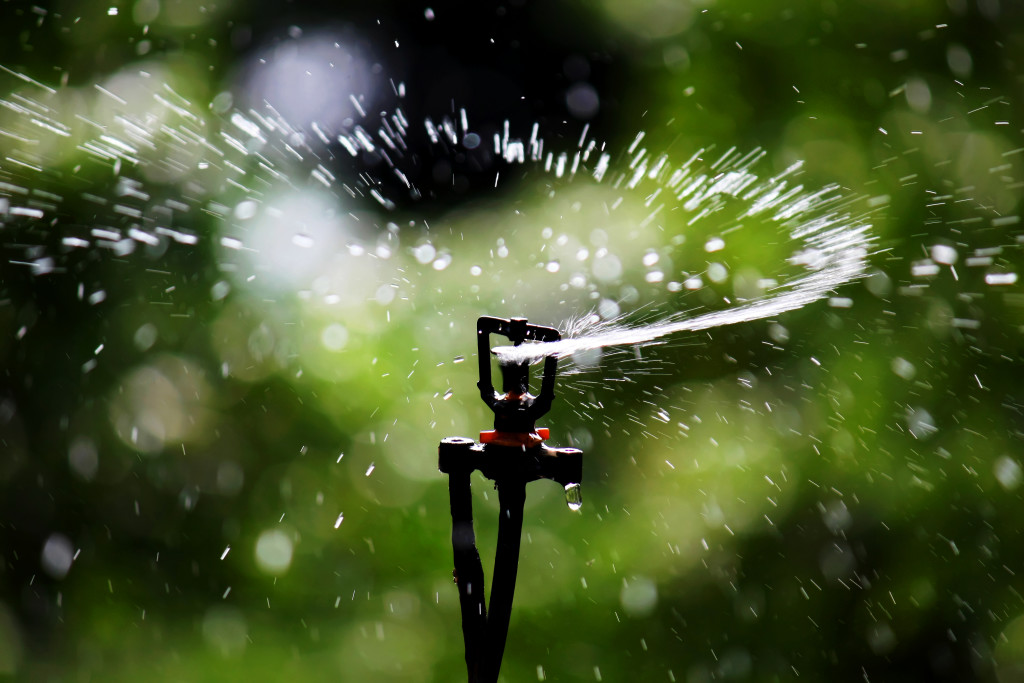The final interview is a pivotal moment to land your dream opportunity. It's…
Conserving water with proven landscape irrigation strategies
*Image Source: By Anton (Own work)
Before technology took over people’s lives, we used simple tools to help us get by. One of which is a water hose that we lug across our landscape to water our plants.
Of course, lugging hoses can be frustrating because it really takes some effort to carry it around and going back to the faucet every now and then to adjust the water flow.
Houses these days, especially the one with beautiful landscape, have installed high-tech irrigation systems to avoid the hassles of traditional plant watering.
However, when landscape irrigation systems are not used properly, the irrigation becomes wasteful rather than beneficial.
How will you know if your current landscape irrigation is wasting water?
You can conduct a catch can test. This test requires the owner to put several small cans with straight lines (e.g. pet food cans or tuna cans) on the lawn in different places. Turn on the sprinkler for 20 minutes. Measure the water in each can using a ruler and determine the average. You have to multiply the average by 3 to get the hourly irrigation rate. If the amount of water is more than what is needed, then you have to tweak your current landscape irrigation system.
Some specialists say that sprinklers also contributed to water wastage. Sprinklers spray a mist over lawns and much of the water have evaporated before it hits the ground.
There is also another lawn-watering problem that some specialists have pointed out – the ‘runoff’. ‘Runoff’ refers to the excess water that goes directly into the gutter. The runoff carries pollutants like fertilizer and pesticides which will, in turn, contaminate the waterways.
Water conservation and runoff prevention can be done by choosing the appropriate landscape irrigation system for your lawn.
For instance drip irrigation or micro irrigation can avoid evaporation by placing the irrigation nozzles close to the ground. This means that the water is not sprayed, it drips water from the pipe holes that lies on the ground or underground. If drip irrigation is monitored and not prolonged, it could save tons of water and prevent runoff. This is ideal for a small yard or for watering individual plants.
Another way to prevent runoff is to choose the ‘cycle and soak’ setting in your controller. What it does is to release water for short periods of time with intervals to allow the soil to absorb the water.
Replacing sprinklers with notary nozzles can help provide uniform watering and water evaporation. In this way, water is controlled and it’s not used excessively. This method could actually improve efficiency by 10 to 20 percent.
Placing bark and wood chips on the soil also prevent evaporation while straw mulch works well in vegetable gardens. Both saves water, prevents weeds and help cool the plant roots especially during the summer.
If you live in a dry area, you should consider Xeriscaping. This is becoming popular these days especially in areas that seldom rain. Planting cacti and other desert plants can help address low water supplies.
All of these techniques are effective. You just have to figure out the best watering plan. You must ask yourself:
- How much water do my plants need?
- How much water does each part of the watering system apply?
- Does my watering system match the output to my plant’s needs?
To sum things up, here are more tips on how to conserve water (and money):
- Water your lawn in the morning for better water absorption. Watering in the evening will help fungi grow on your plants.
- Build a rain gauge in your yard. Accumulating at least ¾ to an inch of rain weekly can actually cover your next lawn watering.
- If you choose to use an automatic sprinkler system, include a rain or moisture sensor shutoff device. This will prevent unnecessary spraying of water.
Use a rain barrel with a well-fitted screen to keep out mosquito larvae and to collect rainfall that can be used to water plants and gardens.




